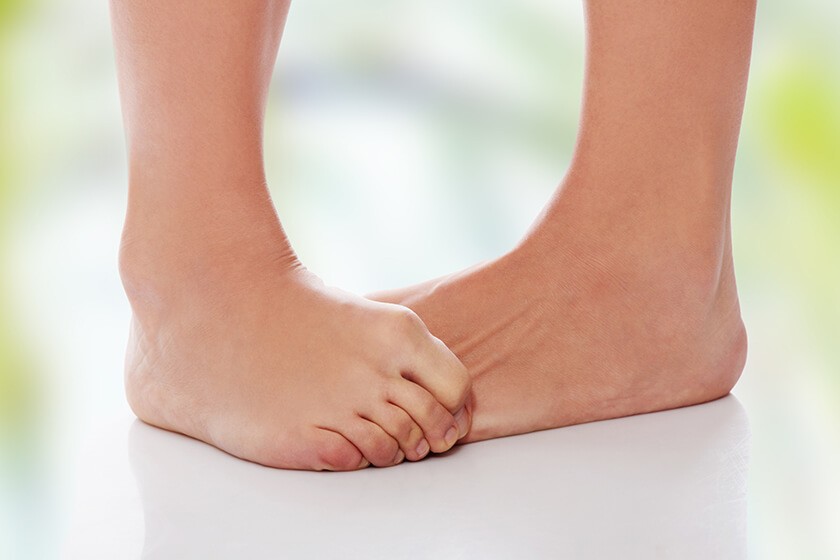
Spider Veins and Varicose Veins: More Than “Just” a Cosmetic Problem

Spider veins – even the name sounds ugly. Still, the hard truth is, most of us will develop these tiny, weblike, purplish veins at some point in our lives – and some of us will develop quite a few. And right about now, just as the warm weather is starting to roll in full force, is when most of us start to notice them. That’s because spider veins – like larger varicose veins – tend to appear on the lower legs and ankles (and sometimes the thighs), areas that typically don’t see the light of day on a regular basis until we break out the shorts and bathing suits.
Now, it’s true – most spider veins are no more than a cosmetic nuisance, and not necessarily an indication of an underlying circulation problem. However, there are some cases when these veins – like varicose veins – can serve as early warning signs of a circulatory problem that needs prompt attention to prevent more serious issues that can have an impact on your overall health and wellness.
Spider Veins: The Ugly Truth
Spider veins are caused by the same factors that cause varicose veins – older age, weight gain, sun exposure, genetics, and even occupations that require long periods of sitting and standing. Hormonal changes like the changes that occur during menopause can also trigger spider veins. For many people, these tiny purplish veins cause few or no symptoms beyond their ugly appearance, while for others, they can be accompanied by feelings of pain, itching or heaviness, especially when they combine to form tangled networks of veins. The skin covering spider veins also tends to be more brittle than surrounding skin, which means if you wind up rubbing them or scratching them, you can cause sores or ulcers to form as well.
While larger varicose veins are located in deeper layers of tissue, spider veins are more superficial, and because they’re so small, they don’t usually bulge like varicose veins. Spider veins are often accompanied by slightly larger veins called reticular veins that can appear bluish or even greenish. These veins are also called “feeder” veins because they supply the spider veins with blood. Most people have never heard of reticular veins – yet they can play a major role in spider vein formation and they can also affect the success of spider vein treatment. In fact, when reticular veins are contributing to spider veins, spider veins can recur even after their treated unless those feeder veins are treated as well. Untreated reticular veins are a common cause of spider vein recurrence – but the good news is, in nearly all cases, reticular veins can be treated in the same way as spider veins, and usually at the same time.
When Spider Veins Are More Than Cosmetic
Sometimes, spider veins occur along with other circulatory problems like varicose veins. And in those cases, they can be an indicator of a condition called chronic venous insufficiency (CVI). CVI means your veins aren‘t functioning properly – and your tissues may not be receiving the nutrients and oxygen they need to stay healthy and function optimally.
But here’s what you need to remember: Even if spider veins aren‘t a sign of CVI, it’s still important to have them treated. That’s because without treatment, spider veins can continue to cause problems, and when reticular veins are involved, the number of spider veins can even increase, detracting from the way your legs look – and from your own self-confidence about your appearance.
Spider Vein Treatment
Because spider veins are more superficial and much smaller than varicose veins, treatment usually can be accomplished via sclerotherapy, the targeted injection of a special solution directly to the affected veins using very fine needles. Once the solution is injected, it begins to irritate the interior lining of the vein, causing it to collapse inward on itself, preventing the flow of blood. Instead, blood is redirected to neighboring veins to restore normal, healthy blood flow while eliminating the ugly appearance of the veins, which will be reabsorbed by the body over the following few weeks. Most treatments take less than 45 minutes, and patients can return home the same day. Compression stockings typically will be prescribed to help speed healing and reduce any discomfort in the area.
Expert Care for Superior Results
Radiology Affiliates Imaging is a top provider of spider vein treatment for patients throughout Central Jersey. Our interventional radiologists use state-of-the-art technology to evaluate and locate problematic veins, ensuring treatment is optimized for each patient’s needs and anatomy at local area hospitals. That means when you schedule your treatment, you can feel confident in your care, every step of the way. To learn more about spider vein or varicose vein treatment or to schedule an evaluation, visit our varicose vein treatment procedure page.




